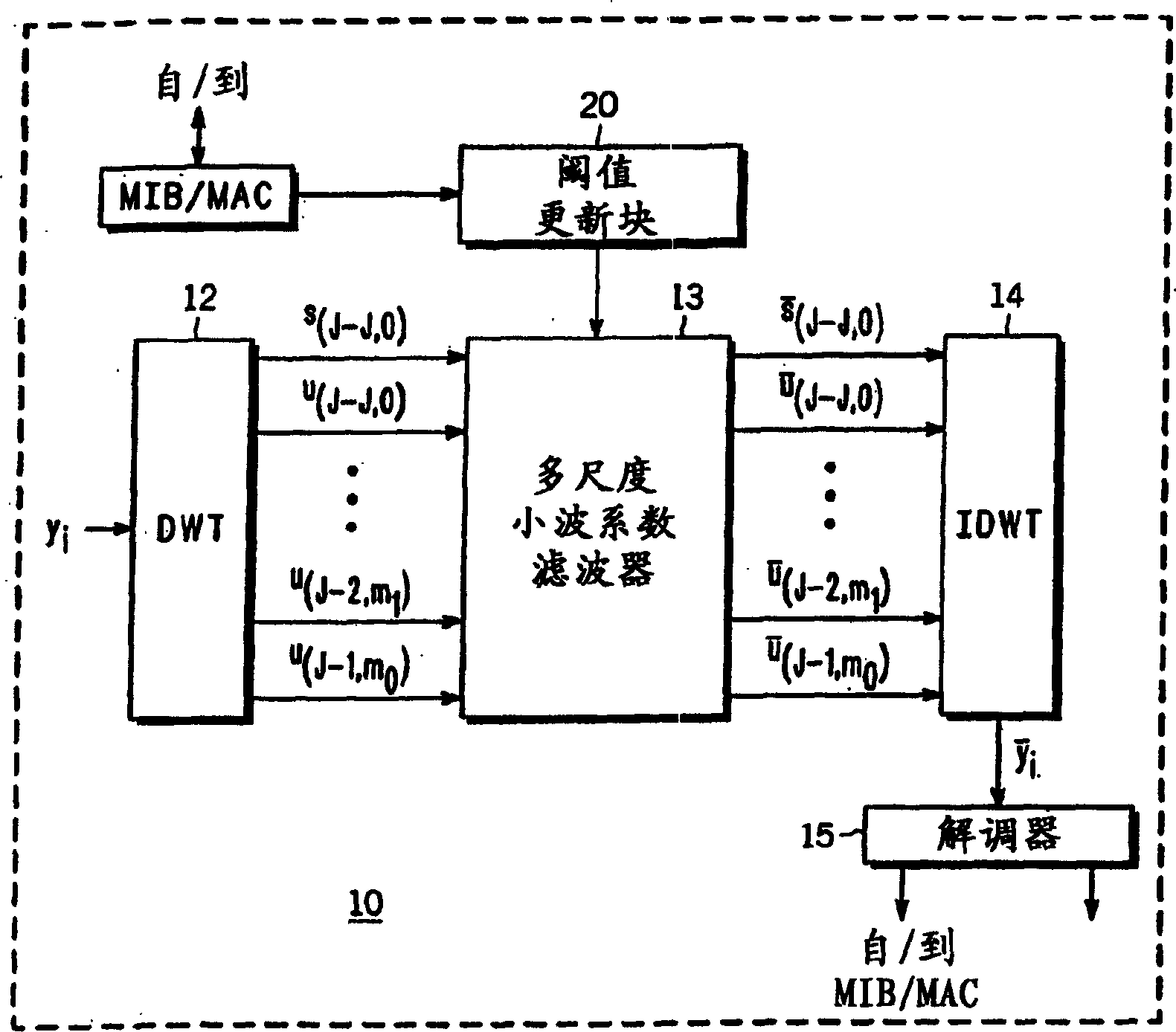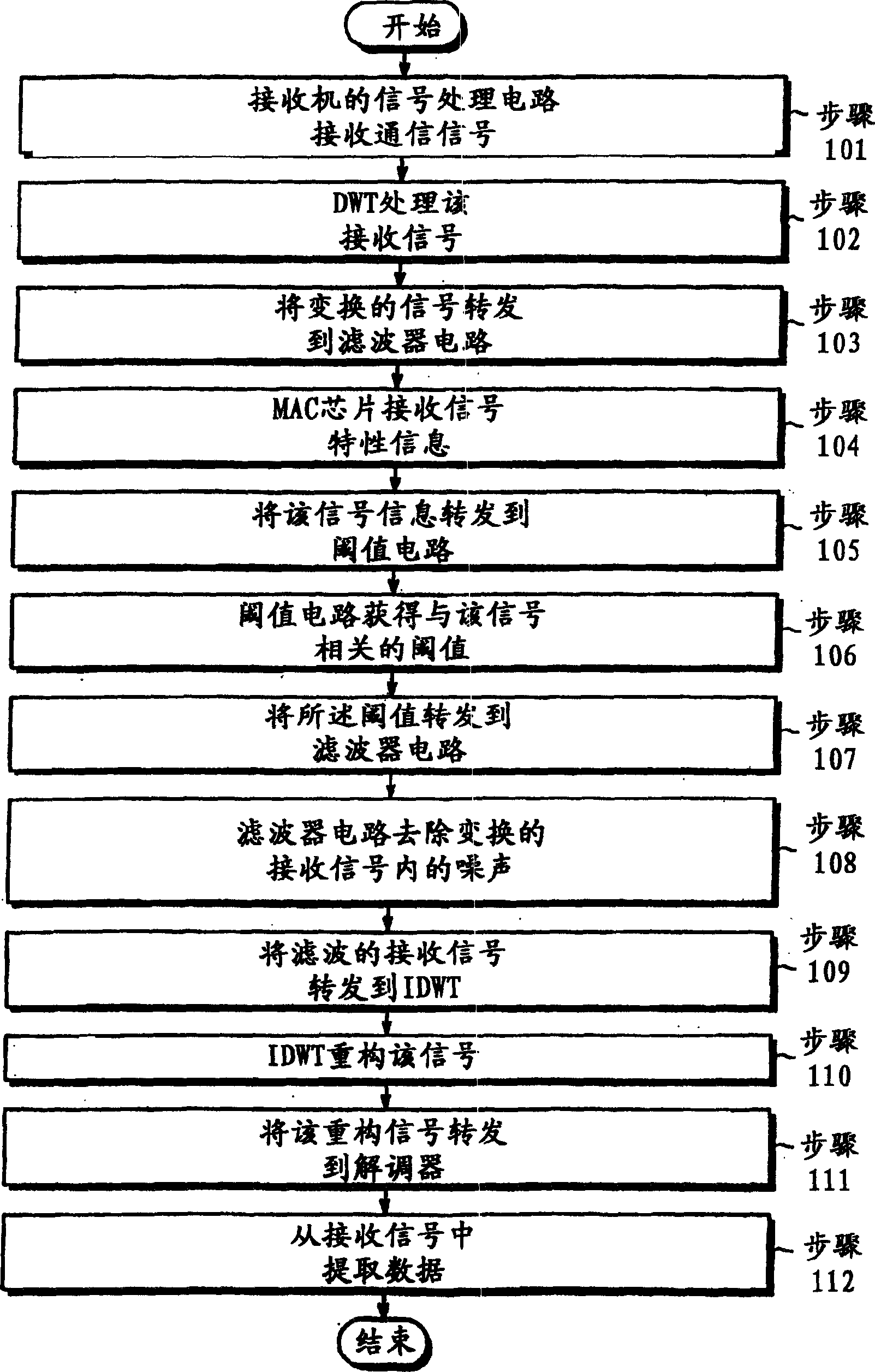An adaptive threshold algorithm for real-time wavelet de-noising applications
A technology of threshold and wavelet coefficients, which is applied in special data processing applications, calculations, modulated carrier systems, etc., can solve the problems of noise and clutter, unreliable real-time signal processing applications, etc.
- Summary
- Abstract
- Description
- Claims
- Application Information
AI Technical Summary
Problems solved by technology
Method used
Image
Examples
Embodiment Construction
[0023] The following detailed description describes preferred embodiments only, and is not intended to limit the scope, applicability, or configuration of the invention. Of course, the following detailed description of the exemplary preferred embodiment will provide those skilled in the art with an enabling description for implementing the preferred embodiment of the invention. It being understood that various changes may be made in the function and arrangement of elements within the essential scope of the invention as described in the appended claims.
[0024] figure 1 is a block diagram of a denoising circuit 10 for use in a signal processor of a receiver according to a preferred embodiment of the present invention. The denoising circuit 10 includes: a demodulator 15 , a discrete wavelet transform (DWT) 12 , a filter 13 , an inverse discrete wavelet transform (IDWT) 14 and a threshold circuit 20 . Noise reduction circuit 10 may be used in any type of system (ie, communicat...
PUM
 Login to View More
Login to View More Abstract
Description
Claims
Application Information
 Login to View More
Login to View More - R&D
- Intellectual Property
- Life Sciences
- Materials
- Tech Scout
- Unparalleled Data Quality
- Higher Quality Content
- 60% Fewer Hallucinations
Browse by: Latest US Patents, China's latest patents, Technical Efficacy Thesaurus, Application Domain, Technology Topic, Popular Technical Reports.
© 2025 PatSnap. All rights reserved.Legal|Privacy policy|Modern Slavery Act Transparency Statement|Sitemap|About US| Contact US: help@patsnap.com



